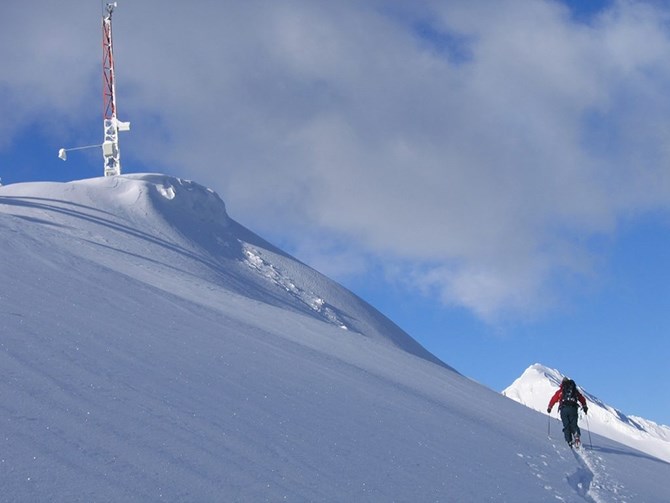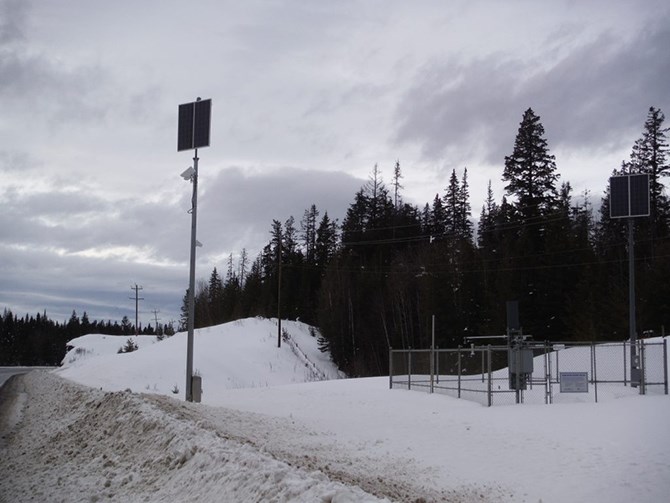
A B.C. highways environmental technician services one of the ministry's weather stations.
Image Credit: SUBMITTED / Ministry of Transportation and Infrastructure
January 30, 2020 - 6:00 PM
Part of the province's highway maintenance in the winter involves keeping a close eye on weather conditions, making the Ministry of Transportation a player, along with Environment Canada, in the field of weather data collection.
The ministry closely monitors weather conditions on B.C.’s highways using roadside weather stations it has set up across the province.
Danielle Pope with ministry communications said they monitor such things as air temperature, humidity and dew point temperature, barometric pressure, water equivalent precipitation, wind speed and direction, pavement surface and sub-surface temperature and pavement condition.
"The ministry has 10 weather stations in the Okanagan-Shuswap and Similkameen Valley, while the Thompson-Nicola has eight stations, which includes all phases of the Coquihalla and southern Yellowhead Highway,” she said in an email.

A technician makes his way to an avalanche weather station.
Image Credit: SUBMITTED / Ministry of Transportation and Infrastructure
Pope says the data is shared by ministry staff with highways maintenance contractors who use the information to help make daily operation decisions to maintain safe highway driving conditions, audit winter maintenance performance on the roads and forecast weather events and avalanche control activities.
The data is also shared with Environment Canada, Avalanche Canada, university research programs and other provincial government agencies and Crown corporations.
“Members of the public can also access the ministry’s weather data via DriveBC which allows drivers to plan ahead before heading out,” Pope said.
What began in the 1970s with a handful of independent weather stations that gathered data on possible avalanches, has grown into a province wide, sophisticated network of environmental sensing stations.
Across B.C., the ministry has a total of 92 road weather stations and 67 avalanche weather stations in addition to 89 frost probe stations installed and monitored by 12 environmental electronics technicians.

A Minstry of Transportation and Infrastructure roadside weather station.
Image Credit: SUBMITTED / Ministry of Transportation and Infrastructure
To contact a reporter for this story, email Steve Arstad or call 250-488-3065 or email the editor. You can also submit photos, videos or news tips to tips@infonews.ca and be entered to win a monthly prize draw.
We welcome your comments and opinions on our stories but play nice. We won't censor or delete comments unless they contain off-topic statements or links, unnecessary vulgarity, false facts, spam or obviously fake profiles. If you have any concerns about what you see in comments, email the editor in the link above.
News from © iNFOnews, 2020